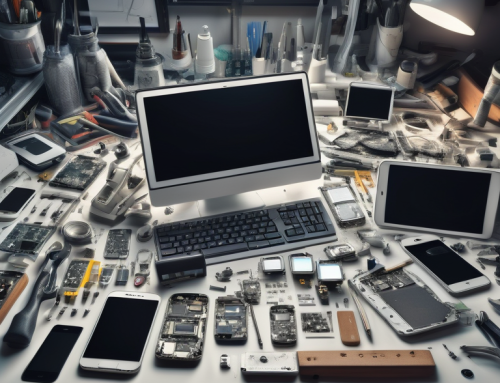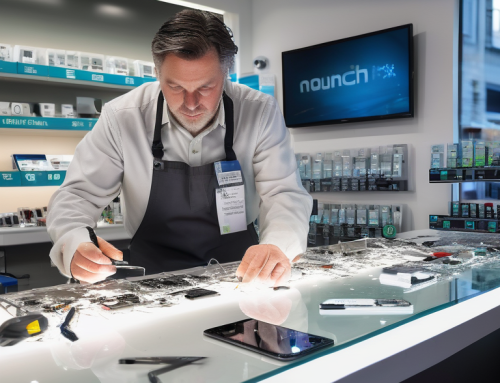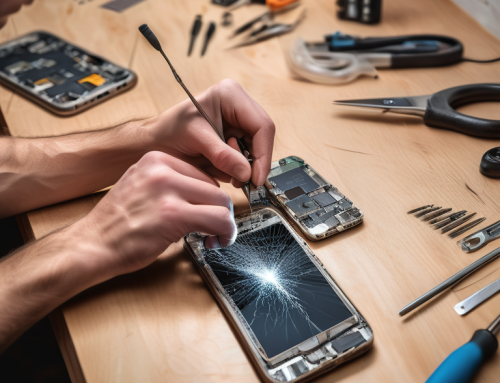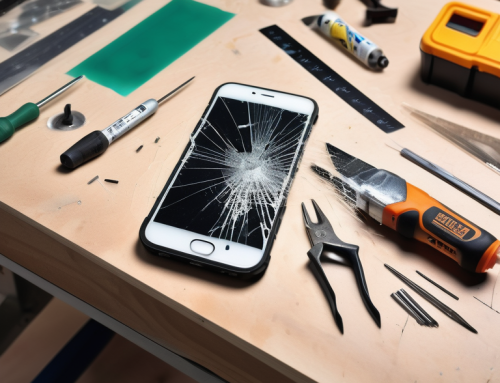
As the iPhone 15 hits the market, users are in for a significant transition with the introduction of the new USB-C charging port. Apple is moving away from its traditional Lightning port and opting for USB-C, which has become a standard among other phone brands. So what does this mean for iPhone users? In this ultimate guide, we will take a deep dive into everything you need to know about this shift to USB-C. We’ll explore the reasons behind Apple’s move, delve into the features of the new port, examine user experience, and discuss potential future plans. We’ll also weigh up the pros and cons of Apple’s switch to USB-C and explore whether it could become a universal charging solution for iPhones. Join us on this journey as we unpack everything there is to know about iPhone 15’s charging port.
Understanding the Transition to USB-C in iPhone 15

The transition to USB-C in the iPhone 15 brings about a new charging experience, delivering faster charging and data transfer speeds while enhancing power delivery. This shift signifies an upgrade for charging accessories, emphasizing faster charging and connectivity. With the move to USB-C, users can expect a more efficient charging experience, aligning with Apple’s focus on improving user convenience and device performance. This transition sets the stage for a new era of charging technology, catering to the evolving needs of customers.
The Shift from Lightning Port to USB-C

With the transition to iPhone 15, Apple is replacing the lightning port with the more versatile USB-C. This change allows for faster charging and data transfer speeds, enhancing the overall user experience. The shift to USB-C signifies Apple’s commitment to improving charging capabilities, offering improved power delivery compared to its predecessors. Users can expect a significant upgrade in charging technology with the implementation of the USB-C port.
Reasons Behind Apple’s Move to USB-C

Apple’s transition to USB-C is fueled by the demand for swifter charging and data transfer, aligning with the industry’s universal connectivity shift. This move complies with the EU’s standardized charging push and embodies Apple’s dedication to expedited, efficient charging. Ultimately, it underscores Apple’s commitment to enhancing user convenience, catering to the increasing need for seamless, high-speed connectivity across devices.
Delving into the Features of iPhone 15’s USB-C Port

The iPhone 15’s USB-C port supports faster charging and data transfer speeds, offering improved connectivity to external devices. Users can expect faster data transfer and charging speeds, with support for power delivery. This new port ensures faster charging and also supports external storage devices, enhancing the overall user experience with the device. The USB-C implementation aligns with the industry’s push for standardized charging across devices, reflecting Apple’s commitment to providing faster and efficient charging.
The Speed and Efficiency of USB-C
USB-C enhances charging speeds and data transfer, prioritizing efficiency. Its power delivery capabilities facilitate quicker charging, improving user experience. The transition to USB-C signifies Apple’s commitment to faster connectivity and charging, aligning with industry standards. The iPhone 15’s USB-C ensures faster charging and efficient data transfer, meeting user expectations for enhanced performance. Overall, USB-C implementation in the new iPhone represents a significant leap towards maximizing user convenience and device functionality.
Other Noteworthy Benefits of USB-C
The inclusion of USB-C in the new iPhone 15 not only supports faster charging and enhanced power delivery but also offers wireless charging for added convenience. Moreover, the USB-C port enables users to connect to external displays, expanding the overall user experience. This enhancement ensures quicker charging, seamless data transfer, and improved connectivity, aligning with the modern needs of smartphone users.
The User Experience with iPhone 15’s USB-C Port

IPhone 15 users benefit from faster charging and improved data transfer speeds with the introduction of USB-C. This new port enables enhanced power delivery, prioritizing efficient charging. The seamless integration of USB-C brings convenience to users, offering faster charging and more efficient data transfer. The transition to USB-C underscores Apple’s commitment to prioritizing user experience through faster charging and enhanced connectivity.
Charging Speeds and Their Impact on Users
Faster charging speeds with USB-C enhance the overall charging experience for users, significantly improving convenience and device usage. The improved charging speed positively impacts the user’s daily routine, offering enhanced power delivery and faster charging times. Users can expect a seamless and efficient charging experience, elevating the overall user experience and providing added convenience for daily device usage. The upgraded USB-C charging capability represents a customer-focused approach, prioritizing user convenience and device usability.
User Convenience – Is USB-C More User-Friendly?
USB-C’s faster charging and data transfer speeds offer enhanced user convenience. With USB-C, users can quickly charge their iPhone 15 and transfer data at a much faster rate compared to the previous Lightning port. This upgrade prioritizes user-friendly charging and data transfer, providing a more seamless and efficient experience.
The Future of USB-C with iPhone Models
The future of iPhone models with USB-C promises faster charging and improved connectivity. The adoption of USB-C in iPhone models signifies the progression towards faster charging standards, setting the stage for enhanced charging technology. This transition represents a significant step towards faster charging, indicating a new era in charging and connectivity for iPhone models. USB-C’s presence in the iPhone models holds the potential for other iPhones to adopt USB-C, providing a good chance for upcoming USB implementations.
Potential for Other iPhones to Adopt USB-C
The transition to USB-C on iPhones could lead to a domino effect, prompting other Apple devices to embrace this technology. This shift may herald a more standardized charging and data transfer experience across the Apple ecosystem. Additionally, integrating USB-C into other iPhones would cater to the rising demand for faster charging and data transfer rates. Furthermore, this transition would likely enhance compatibility with a broader array of accessories and external devices, aligning with evolving connectivity standards.
The Role of USB-C in Apple’s Future Plans
The incorporation of USB-C reflects Apple’s commitment to faster charging speeds and improved connectivity, aligning with the company’s future plans. This strategic shift towards USB-C aims to standardize charging and data transfer capabilities across devices, emphasizing adaptability, user convenience, and compatibility with a diverse range of accessories. Apple’s vision of empowering users with reliable, faster, and versatile charging and data transfer solutions is underscored by the embrace of USB-C in its future plans.
Pros and Cons of iPhone’s Switch to USB-C
The switch to USB-C offers iPhone users faster charging capabilities, enabling more efficient device powering. Additionally, USB-C’s adoption presents a significant advantage in terms of interoperability with a broader array of accessories and external devices. However, users may experience a period of adaptation to new charging accessories and cables despite the benefits of faster charging and accelerated data transfer speeds. This transition may require users to invest in new cables and adapters, potentially adding to the cost of accessories.
Advantages of the Shift to USB-C
With the transition to USB-C, iPhone users can experience faster charging, meeting the growing demand for reliable device usage. The integration of USB-C provides enhanced power delivery, ensuring efficient charging and better battery management. Additionally, it facilitates quicker data transfer, enabling seamless file management across devices. Moreover, the shift fosters compatibility with a wider range of accessories, including external storage devices and display adapters, offering users an expanded ecosystem of compatible accessories.
The Downsides of USB-C – Is There a Trade-Off?
Is there a trade-off to the adoption of USB-C? While USB-C offers faster charging and data transfer, users may face the inconvenience of needing new accessories and adapters. The transition may require replacing existing lightning accessories, potentially incurring additional costs. Despite its advantages, USB-C may necessitate users to adapt to new connector types, impacting compatibility with existing accessories. Upgrading charging accessories can impact user convenience in the short term. However, these downsides are part of a transitional phase that brings temporary inconvenience.
Exploring the Idea of a Portless iPhone
The notion of a portless iPhone presents the potential for heightened water and dust resistance, bolstering durability and reliability for users. Embracing wireless charging as the primary method could mark a significant shift, eliminating dependence on physical charging ports. This transition aligns with evolving industry trends and user preferences, reflecting Apple’s commitment to advancing technology. Furthermore, the concept opens doors to innovative accessories like wireless charging pads and adapters, enriching the device ecosystem.
Is a Portless iPhone Possible?-iphone 15 charger port
The possibility of a portless iPhone relies on advancements in wireless charging and data transfer technologies, prioritizing user convenience and mobility. Apple’s exploration of a portless design showcases their commitment to minimalism and enhancing user experience. The feasibility of a portless iPhone hinges on the development of robust wireless solutions, ensuring seamless functionality. This idea signifies a bold step towards a future where wireless connectivity takes precedence over traditional port-based interactions.
The Pros and Cons of a Portless iPhone-iphone 15 charging port
Enhanced water and dust resistance in a portless iPhone enhances device durability and reliability. Wireless charging aligns with the trend, offering a convenient and cable-free experience. However, users may need wireless accessories and adapters, affecting compatibility. Adapting to wireless charging may require additional investment. The pros and cons encompass improved durability, charging convenience, and an evolving ecosystem of wireless accessories.
Can USB-C Become a Universal Charging Solution for iPhones?
USB-C’s potential as a universal charging solution for iPhones signifies a step towards standardizing charging across devices, ensuring flexibility and convenience for users. Integration of USB-C presents an opportunity to streamline charging accessories, fostering ease of use and compatibility. It reflects an industry-wide effort to offer a cohesive, adaptable, and future-proof charging experience.
The transition to USB-C in the iPhone 15 brings several benefits to users. It offers faster charging speeds, increased efficiency, and a more user-friendly experience. However, it’s important to consider both the advantages and potential downsides of this shift. While USB-C has the potential to become a universal charging solution for iPhones, it remains to be seen if other models will adopt it. Additionally, there is speculation about the possibility of a portless iPhone in the future. Ultimately, the move to USB-C reflects Apple’s commitment to enhancing user experience and staying at the forefront of technology. Stay updated with the latest developments to make informed decisions about your iPhone charging options.
“iPhone 15 Charge Port Cleaning: Unveiling the Importance and How-To Guide”
Introduction: As technology evolves, so do the charging ports of our beloved devices. With the recent release of the iPhone 15, Apple continues to innovate in the realm of charging capabilities. In this blog post, we’ll delve into the significance of charge port cleanliness for the iPhone 15 and explore a step-by-step guide for effective cleaning, touching on various related topics such as the Pro Max, Apple Watch, Android phones, and more.
- The Evolution of Charging Ports: iPhone 15 and Beyond The iPhone 15, along with other Apple devices such as the Pro Max, iPad Pro, and AirPods Pro, features a proprietary lightning port. This innovation, while providing a sleek and unified design, requires proper maintenance to ensure optimal charging performance.
- Importance of Charge Port Cleaning Over time, charge ports can accumulate dust, lint, and debris, potentially hindering the charging process. Cleaning the charge port is crucial to maintaining a reliable connection between your iPhone 15 and its power source, ensuring efficient charging.
- Compatibility Across Devices: Apple Watch, Android Phones, and More While the iPhone 15 uses a proprietary lightning port, other Apple devices like the Apple Watch may have different charging mechanisms. Additionally, many Android phones utilize USB ports. Understanding the diverse charging methods ensures effective maintenance across all your gadgets.
- USB Implementers Forum and Universal Standards In recent years, the USB Implementers Forum has worked towards establishing universal charging standards. The good news is that the iPhone 15 supports USB, aligning with these efforts for more standardized charging solutions across various devices.
- Lightning Port Specifications and Power Delivery Delve into the specifications of the lightning port, exploring how much power it can handle and its compatibility with power adapters. Learn about the reasoning behind these specifications and how they contribute to the overall charging capabilities of your iPhone 15.
- Old Chargers and Power Adapters: Compatibility Issues While good news prevails regarding USB support, bad news might arise when it comes to using old chargers and power adapters. Understand the potential compatibility issues and the importance of using appropriate and reliable charging accessories.
- Additional Information: HDMI, Thunderbolt, and Qi Charging Explore additional functionalities of the lightning port, such as its role in supporting HDMI, Thunderbolt, and Qi wireless charging. Learn how these features enhance the versatility of your iPhone 15 and its compatibility with various gadgets and accessories.
- Cleaning Your iPhone 15 Charge Port: A Step-by-Step Guide Provide readers with a comprehensive guide on cleaning the charge port of their iPhone 15. Include tips on using tools like compressed air, small brushes, or even specialized cleaning kits to ensure a thorough and safe cleaning process.
Conclusion: Maintaining a clean charge port is essential for the efficient functioning of your iPhone 15 and other gadgets. By understanding the specifications, compatibility issues, and universal standards, users can ensure a seamless charging experience across a diverse range of devices. Follow our step-by-step guide for charge port cleaning to keep your iPhone 15, Pro Max, Apple Watch, and other gadgets in optimal condition.






